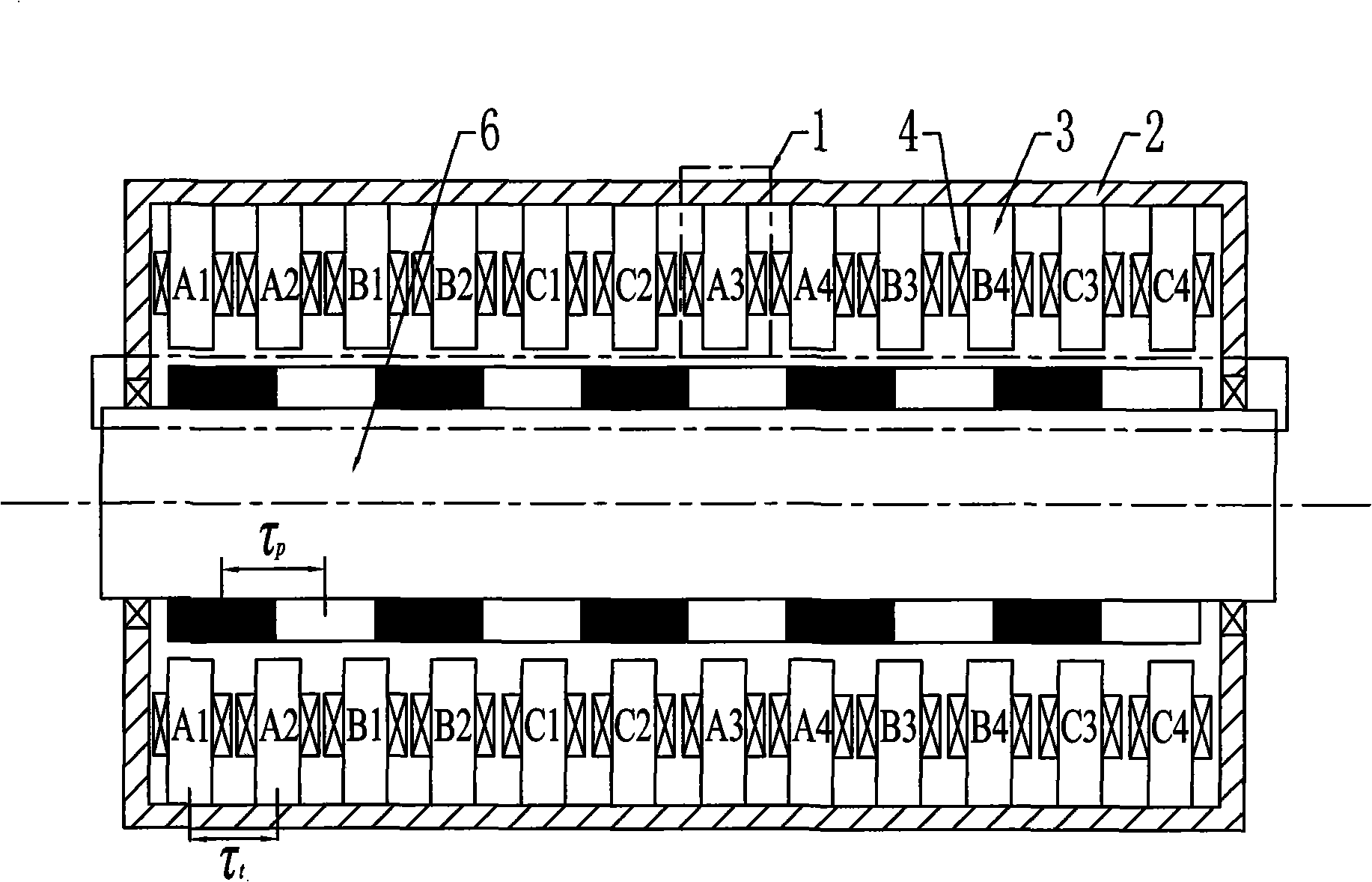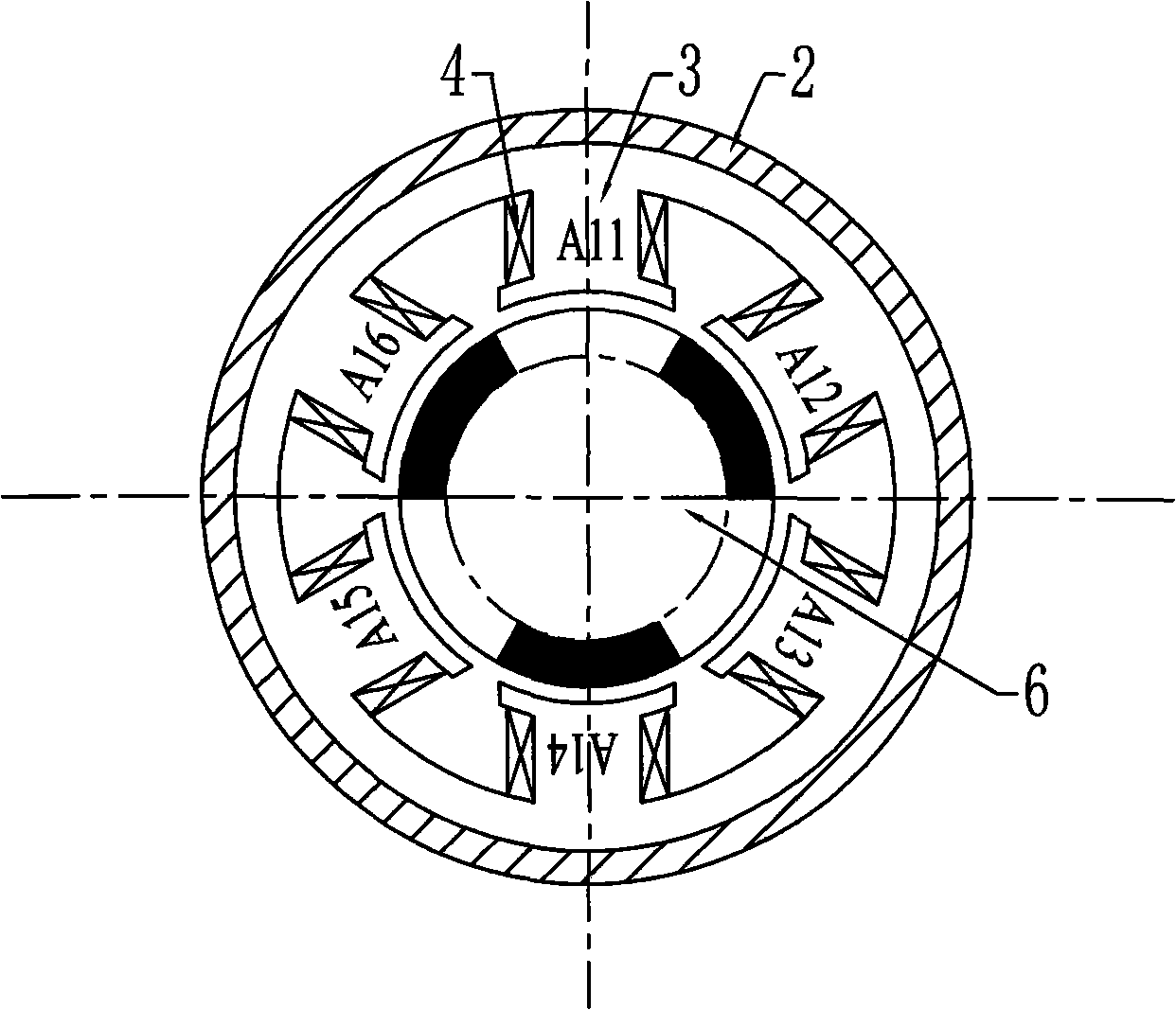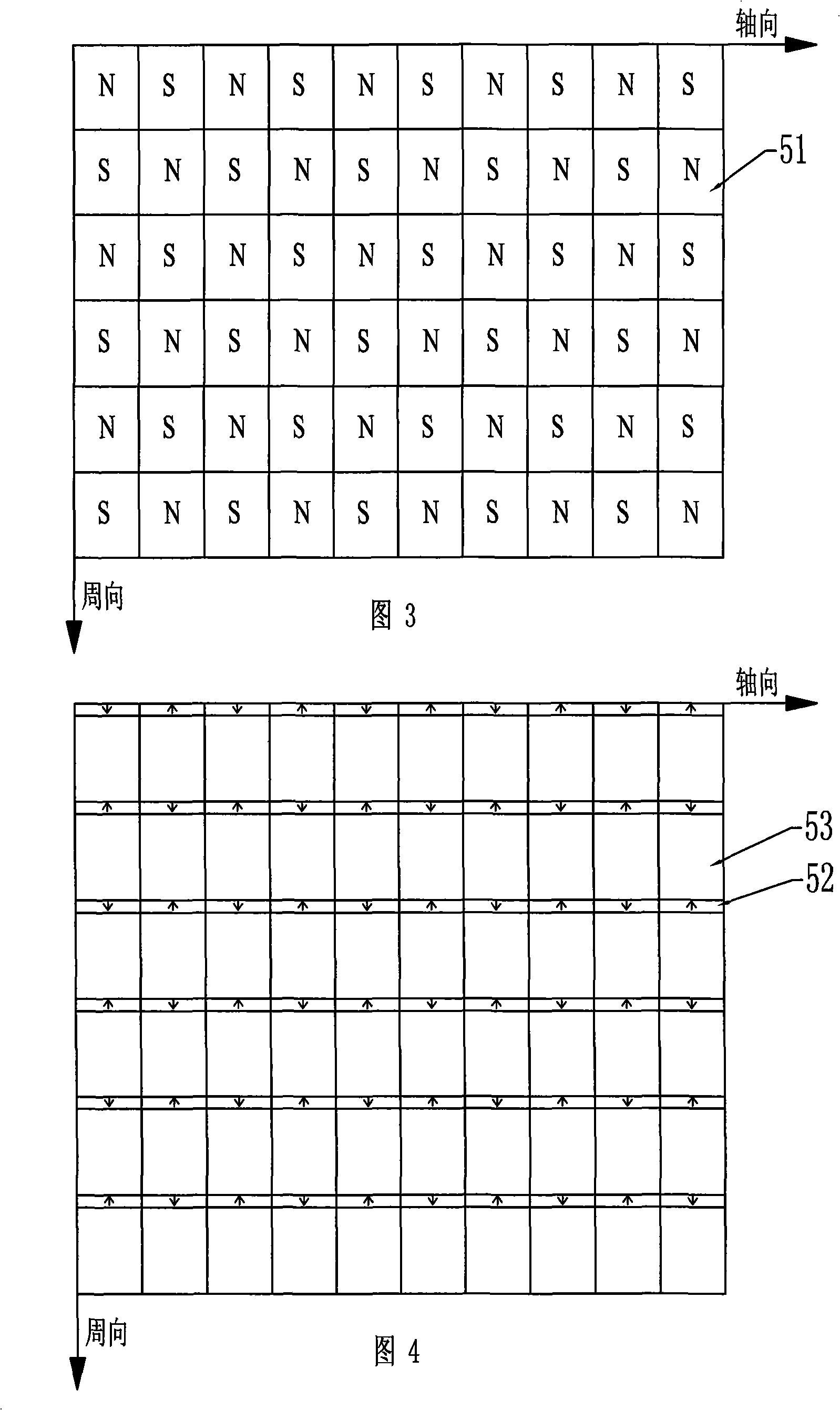Transverse flux cylinder type permanent magnet linear synchronous motor
A permanent magnet linear synchronous, transverse magnetic flux technology, applied in electrical components, electromechanical devices, electric components, etc., can solve problems such as the dynamic characteristics of the motor affecting the current control accuracy, the low efficiency of the linear synchronous motor, and the large eddy current loss of the solid iron core. Achieve the effect of improving the accuracy and efficiency of current and electromagnetic force control, simple structure and improving efficiency
- Summary
- Abstract
- Description
- Claims
- Application Information
AI Technical Summary
Problems solved by technology
Method used
Image
Examples
specific Embodiment approach 1
[0038] Specific implementation mode one: combine figure 1 with figure 2 This embodiment will be described. The transverse flux cylindrical permanent magnet linear synchronous motor of this embodiment is composed of a primary, a secondary and an air gap; the primary includes S phase armature units 1 and a casing 2, where S=nm, S phase armature units 1 Arranged on the inner wall of the casing 2; the phase armature unit 1 includes the phase unit armature core 3 and the phase unit armature winding 4, and the winding directions of the coils on the adjacent phase unit armature core 3 are opposite; each phase unit armature The core 3 is a ring core with 2q teeth uniformly arranged on the inner circumference, the phase unit armature winding 4 is a concentrated winding, and a coil is wound on each tooth of the phase unit armature core 3, and the coils on the adjacent teeth are wound in the direction of On the contrary, all the coils on the teeth of the same phase unit armature core ...
specific Embodiment approach 2
[0044] Embodiment 2: This embodiment differs from Embodiment 1 in that the shaft cylinder 6 is cylindrical or cylindrical; the shaft cylinder 6 is made of magnetically conductive or non-magnetically conductive material. Other compositions and connection methods are the same as those in Embodiment 1.
specific Embodiment approach 3
[0045] Specific embodiment three: this embodiment is described in conjunction with Fig. 3, the difference between this embodiment and specific embodiment one is that the permanent magnet array is made up of tile-shaped permanent magnets 51, and the magnetization direction of tile-shaped permanent magnets 51 is radial charging. magnetic, the plurality of tile-shaped permanent magnets 51 are adjacently arranged to form a permanent magnet circle along the circumferential direction, and 2q permanent magnet circles are arranged adjacent to each other in the axial direction, and the filling of every two adjacent tile-shaped permanent magnets 51 The magnetic direction is opposite.
[0046] The permanent magnet array described in this embodiment is made up of tile-shaped permanent magnets 51, and each N-pole tile-shaped permanent magnet is surrounded by 4 S-pole tile-shaped permanent magnets, and each S-pole tile-shaped permanent magnet is also surrounded by Surrounded by 4 N-pole til...
PUM
 Login to View More
Login to View More Abstract
Description
Claims
Application Information
 Login to View More
Login to View More - R&D
- Intellectual Property
- Life Sciences
- Materials
- Tech Scout
- Unparalleled Data Quality
- Higher Quality Content
- 60% Fewer Hallucinations
Browse by: Latest US Patents, China's latest patents, Technical Efficacy Thesaurus, Application Domain, Technology Topic, Popular Technical Reports.
© 2025 PatSnap. All rights reserved.Legal|Privacy policy|Modern Slavery Act Transparency Statement|Sitemap|About US| Contact US: help@patsnap.com



